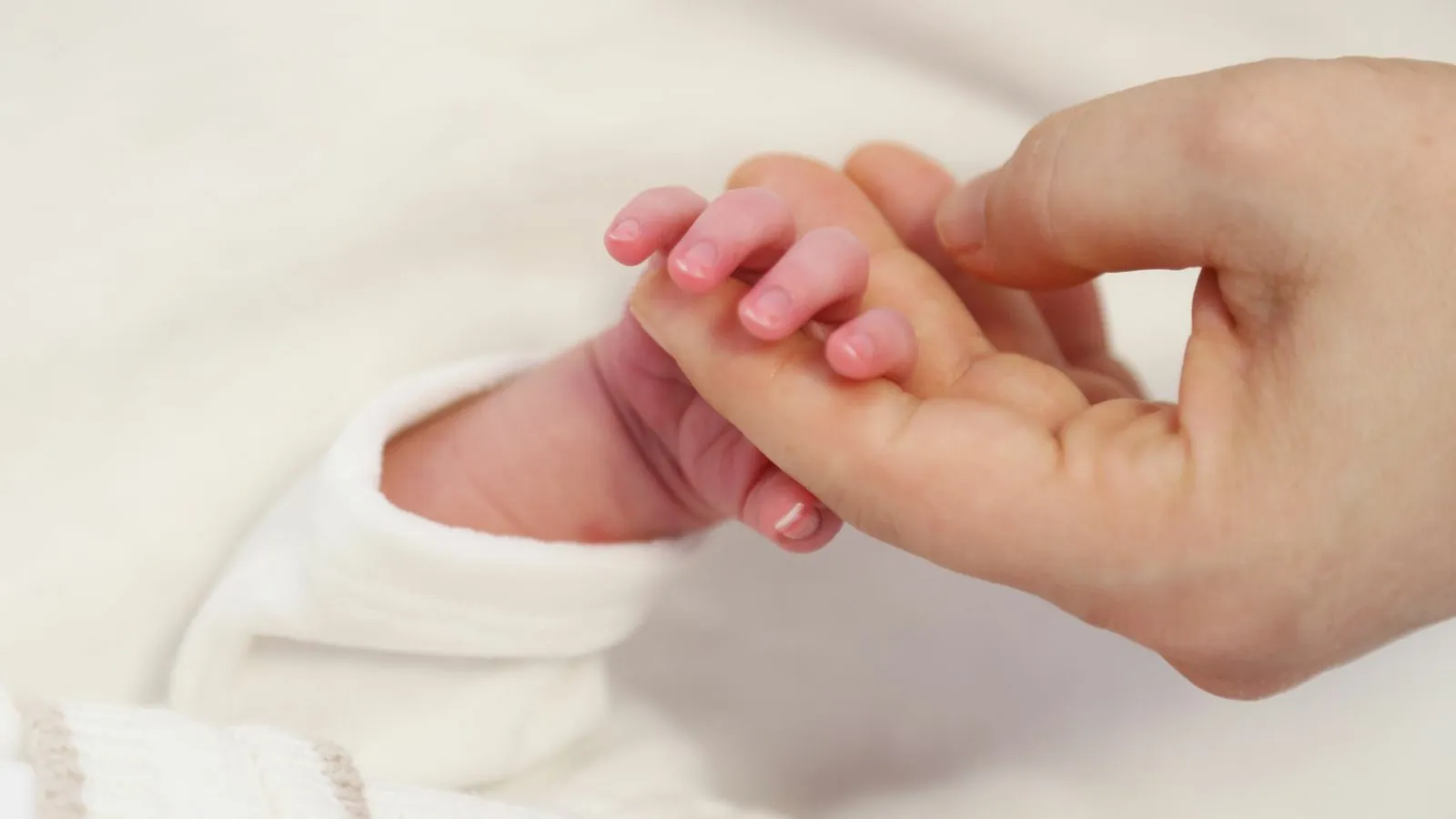The arrival of your newborn is a moment of profound joy and wonder. You’re finally holding the tiny person you’ve waited months to meet. Alongside this overwhelming love, however, it’s natural to feel a wave of anxiety. Every little noise, twitch, and cry can bring a rush of questions. Is this normal? Should I be worried?
This article is built on a fundamental truth: while most births are safe, some risks do exist. Understanding the difference between a normal newborn adjustment and a potential issue is one of the most powerful tools you have as a new parent. Our goal is to provide clear, calm guidance that empowers you. We will walk through normal newborn characteristics, explain standard medical checks, and offer a simple checklist of potential warning signs.
This guide is designed to give you clarity and confidence, helping you understand the normal recovery process and recognize the signs that warrant immediate attention.
Table of Contents
ToggleKey Takeaways
- Most newborn behaviors in the first 24 hours, including specific appearances, reflexes, and feeding patterns, are part of a normal, healthy adjustment to life outside the womb.
- Standard medical checks like the Apgar score and initial physical exams are routine safety measures designed to monitor your baby’s health from the very beginning.
- A clear checklist of physical, behavioral, and feeding signs can help you distinguish between normal newborn quirks and potential early indicators of a birth injury.
- Trusting your instincts and immediately communicating any concerns to medical staff is crucial, as early intervention is vital if a birth injury is suspected.
The Baseline: What Is Normal for a Newborn in the First 24 Hours?
To spot the unusual, you first need to understand the usual. The first day of life is a period of rapid transition for your baby. Many things you’ll see are temporary and completely normal parts of this process.
Appearance
Your baby might not look like the perfectly round-headed infants in commercials, and that’s okay. Common, transient features include a cone-shaped head from passing through the birth canal (molding), a waxy white coating called vernix caseosa, and fine, downy hair known as lanugo. Their skin may also appear blotchy, and it’s common for hands and feet to have a bluish tint (acrocyanosis) as their circulatory system adjusts.
Behaviors & Reflexes
Newborns are equipped with a set of innate reflexes that signal healthy neurological function. You’ll likely notice the Moro (startle) reflex, where they fling their arms out when surprised, as well as rooting, sucking, and grasping reflexes. As noted by parenting resource Raising Children, these automatic responses are crucial for survival and development in the first few weeks.
Feeding & Digestion
A newborn’s stomach is tiny—about the size of a cherry—so initial feedings will be small and frequent. The first milk, called colostrum, is packed with antibodies and is all your baby needs at first. Within the first 24 hours, you should also see their first bowel movement, a dark, tarry substance called meconium.
Sleep
Newborns sleep a lot, but in short bursts. Most will sleep for a total of 14 to 17 hours in a 24-hour period. According to Pregnancy Birth Baby, this is often broken into six to eight separate sleep periods, each lasting two to four hours.
Crying
Crying is your baby’s primary way to communicate. They will cry to tell you they are hungry, uncomfortable, tired, or simply in need of closeness. Over time, you may start to recognize the different sounds of their various needs.
Standard Medical Checks: What Doctors and Nurses Look For
Immediately after birth, your baby will undergo several routine checks to ensure they are healthy and transitioning well. Understanding these procedures can help you feel more confident in the care they are receiving.
The Apgar Score
This is one of the very first tests your baby will have. It’s a quick assessment performed at one and five minutes after birth that evaluates five key areas: appearance (skin color), pulse (heart rate), grimace (reflexes), activity (muscle tone), and respiration (breathing). As UnityPoint Health explains, your baby will receive a score from zero to ten based on this evaluation, giving the medical team a fast snapshot of their overall condition.
Initial Physical Exam
A pediatrician or nurse will perform a comprehensive head-to-toe examination. This includes measuring their weight, length, and head circumference. They will also check the baby’s hips, feel the soft spots (fontanelles) on their head, and ensure all body parts are formed and functioning correctly.
Routine Procedures
You can also expect a few standard preventive treatments. These typically include a Vitamin K shot to aid in blood clotting, antibiotic eye ointment to prevent infection, and an initial hearing screening to check for any auditory issues.
A Parent’s Checklist: Early Warning Signs of a Potential Birth Injury
This checklist is a tool for observation, not diagnosis. If you notice any of these signs, your role is not to worry in silence but to bring them to the immediate attention of your medical team.
Physical and Body Movement Signs
- Bruising or Swelling: Noticeable bruising, swelling, or unusual marks, especially on the head, face, or shoulders, that don’t seem to resolve quickly.
- Asymmetrical Movement: One side of the body, particularly an arm or leg, appears significantly weaker, floppier, or less mobile than the other.
- Abnormal Muscle Tone: The baby feels either very stiff and rigid (hypertonia) or extremely floppy and limp like a rag doll (hypotonia). An arched back while crying can also be a sign of abnormal tone.
- Seizures: Any uncontrolled twitching, repetitive jerking movements of the limbs or face, or episodes of staring blankly.
Breathing and Feeding Signs
- Feeding Difficulties: Trouble initiating or sustaining a latch, a very weak or absent sucking reflex, or choking and sputtering during feeds.
- Excessive Drooling: Drooling far beyond what seems typical for a newborn.
- Breathing Issues: Signs of respiratory distress, such as very rapid breathing (tachypnea), grunting sounds with each breath, flaring nostrils, or retractions (where the skin pulls in between the ribs).
- Poor Coloring: A persistent pale or bluish skin tone (cyanosis), especially around the lips or torso, which can indicate low oxygen levels.
Behavioral Signs
- High-Pitched Cry: An unusually shrill, inconsolable cry that sounds different from a typical “I’m hungry” cry and cannot be soothed.
- Extreme Lethargy: The baby is unresponsive, difficult to wake for feedings, or seems excessively sleepy and listless.
- Weak or Absent Reflexes: A poor startle reflex or an inability to root for food when their cheek is stroked.
Normal vs. Concerning: A Quick Comparison Guide

It can be hard to tell the difference between a normal quirk and a red flag. This table offers a quick comparison, but remember that the intensity, persistence, and combination of symptoms are what matter most.
| Category | What’s Often Normal (First 24 Hours) | What Might Be Concerning (Seek Medical Attention) |
|---|---|---|
| Appearance/Touch | – Mild molding of head, resolves quickly | – Significant bruising/swelling on head/face |
| – Acrocyanosis (bluish hands/feet) | – Persistent pale or bluish skin (cyanosis) beyond extremities | |
| – Jitteriness (brief, symmetrical tremors) | – Uncontrolled twitching, jerking, or seizures | |
| Movement/Tone | – Random, jerky limb movements | – One arm/leg limp or not moving |
| – Flexed posture, strong reflexes | – Very stiff (hypertonia) or very floppy (hypotonia) muscle tone | |
| – Startle reflex (Moro) | – Arching back while crying, weak or absent reflexes | |
| Breathing | – Irregular breathing with brief pauses | – Rapid breathing (>60 breaths/min), grunting, flaring nostrils |
| – Occasional sneezing/hiccups | – Chest retractions (skin pulling in between ribs) | |
| Feeding | – Seeking breast/bottle, brief suckling bouts | – Difficulty latching/sucking, poor swallow, excessive drooling |
| – Passing first meconium stool | – No interest in feeding, extreme lethargy during feeds | |
| Crying/Behavior | – Crying when hungry, wet, or tired (soothable) | – High-pitched, inconsolable crying |
| – Periods of alertness & quiet sleep | – Extreme lethargy, unresponsiveness, difficulty waking |
Common Birth Injuries and Their Immediate Signs
When concerning symptoms are present, they can sometimes point to specific types of birth injuries. Recognizing these signs early is important, and having access to a trusted medical malpractice lawyer in York can provide guidance and support for families navigating the next steps. Understanding these connections helps caregivers respond promptly and ensures that any necessary actions are taken to protect the child’s well-being.
Brachial Plexus Injuries (e.g., Erb’s Palsy)
This injury involves damage to the nerves that control the arm and hand. It is often indicated by a weak, floppy, or completely immobile arm on one side of the body.
Hypoxic-Ischemic Encephalopathy (HIE)
HIE is a brain injury caused by oxygen deprivation. Immediate signs can include low Apgar scores, very weak muscle tone, seizures, difficulty breathing, and significant feeding problems right after birth.
Cerebral Palsy
While a definitive diagnosis often comes later, early indicators can be present from birth. These include abnormal muscle tone (either too stiff or too floppy), persistent feeding problems, and weak reflexes. Medical experts note that while some signs are immediate, many symptoms may take one to two years to appear.
Physical Trauma
Visible injuries like bruising, swelling, fractures (especially of the collarbone), or nerve damage (such as facial palsy) can result from a difficult or instrument-assisted delivery (e.g., forceps or vacuum extractor).
What to Do if You’re Concerned: Your Immediate Next Steps
If you observe anything that worries you, acting quickly and calmly is key. Here are three simple steps to take.
Step 1: Trust Your Instincts
You are the person who will know your baby best. Never dismiss a concern as “silly” or worry about being an “overanxious parent.” It is always better to ask a question and be reassured than to ignore a potential problem.
Step 2: Alert Medical Staff Immediately
Press the call button for your nurse or find a doctor. Clearly and calmly state what you are seeing and why it concerns you. Use specific language from the checklist if it helps (e.g., “I’m concerned because his breathing seems very fast, and his nostrils are flaring”).
Step 3: Document Everything
Keep a simple record on your phone or in a notebook. Note the date, time, the specific symptoms you observed, and the name of the nurse or doctor you spoke with. This documentation can be invaluable for medical follow-up and for understanding the timeline of events later on.




